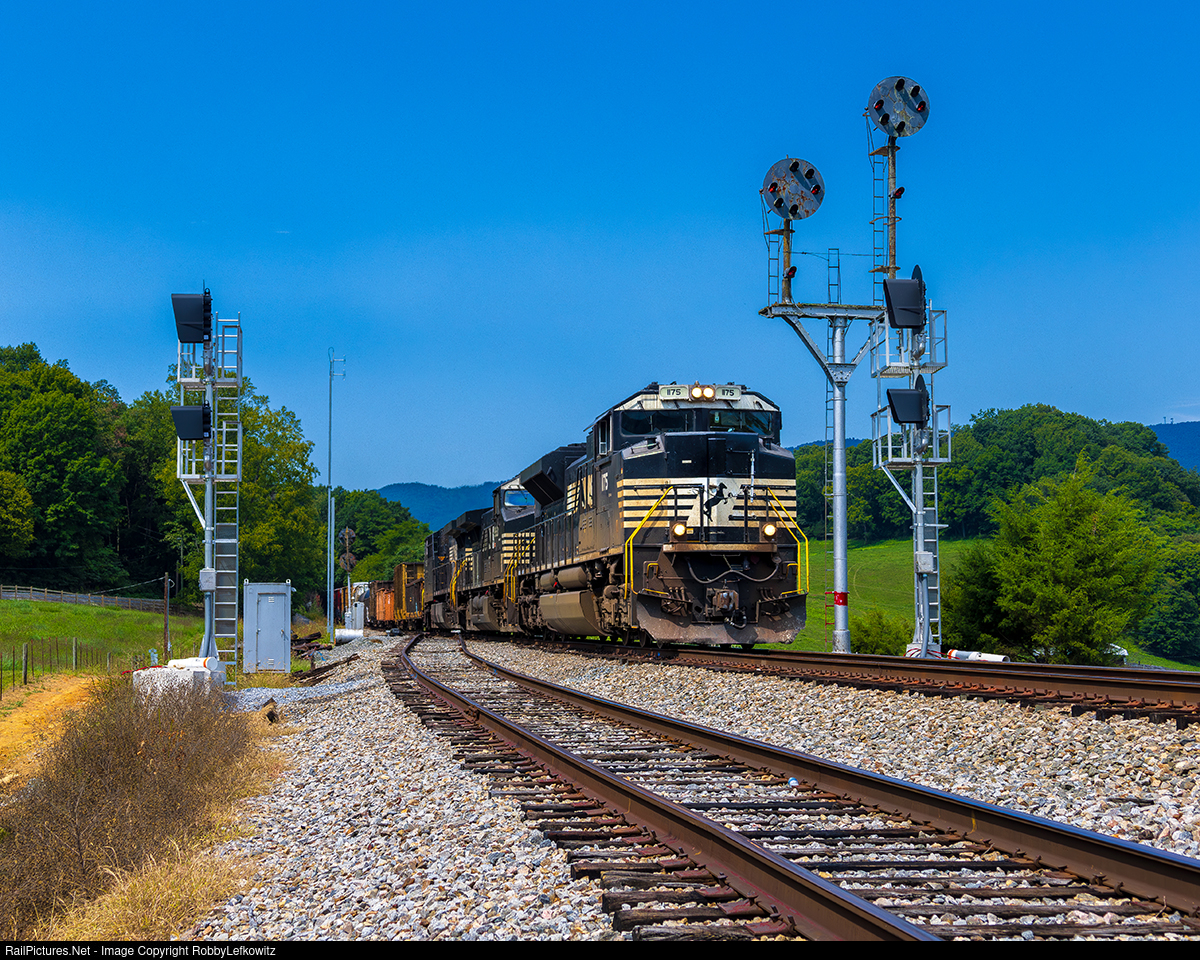Stations with large terminal fans often exhibit a problem at one or both of edge tracks. Because rail vehicles can't generally make hard right turns, one needs a longer series of switches to reach the highest and/or lowest track. Unfortunately terminals often abut a fixed location like a river or street or public square and to avoid having those extreme tracks things can get a little squished. In the early 1980s, New Jersey Transit engaged in a near total reconstruction of the former Delaware, Lackawanna and Western electrified suburban network. Not only was the 3kv DC traction power system under powered and on its last legs, but the signaling system was firmly rooted in the 1920's. In the re-signaling project that followed, NJT built the last great North American interlocking tower, TERMINAL TOWER and replaced most vestiges of the former DL&W plant.
 |
| New (frame left) and old HOBOKEN TERMINAL TOWERs shortly before cutover. |
In the late DL&W era Hoboken Terminal signals consisted largely of two head, small target searchlight signals displaying the DL&W's unique mix of color light signal indications. Long platforms in the center of the terminal had these mounted on signal gantries in the normal way, while tracks towards the edge of the low 1908 train shed saw signals mounted below the gantries under the shed itself. Moreover, while center tracks could get a "straight" clear out of town, tracks towards the edges had to make do with a Restricting indication as the DL&W lacked Slow Clear and Slow Approach options, even on dwarfs.
When NJT rebuilt the signaling there appears to be a time when the new signals were wired into the old HOBOKEN TERMINAL tower's old US&S 1908 Electro-Pneumatic interlocking machine. To make the cutover process easier, signal locations were largely kept the same, but NJT had no desire to keep the old handicap of trains of edge tracks departing under a Restricting signal indication. This meant that the replacement "high" signals had to display R/R/G Slow Clear as opposed to the G and G/G on a dwarf. In most locations this wasn't a big deal as the signal gantries could easily support three tri-light heads, however on tracks 2, 3, 12 and 13, the need to suspend signals under the trainshed due to the closeness of the first switches presented a bit of a problem.
 |
| TERMINAL TOWER 36W2 and 36W1 suspended signals governing tracks 3 and 2 respectively. |
 |
| TERMINAL TOWER 88W and 92W suspended signals governing tracks 13 and 12 respectively. |
The solution was somewhat akin to a Penn Station signal, just with three "heads" instead of two. To display R/R/G, R/R/*Y* and R/R/Y, two fixed Safetran modular dwarf cubes were mounted close above an additional three-unit cluster of modular dwarf cubes. These were then mounted close under the roof at the westernmost end of the trainshed.
 |
| 36W2 signal governing track #3. |
Although a bit inelegant compared to a dwarf or today's compact LED searchlights, they are a unique solution in today's largely homogeneous signaling environment and are likely to persist for many years to come.
















